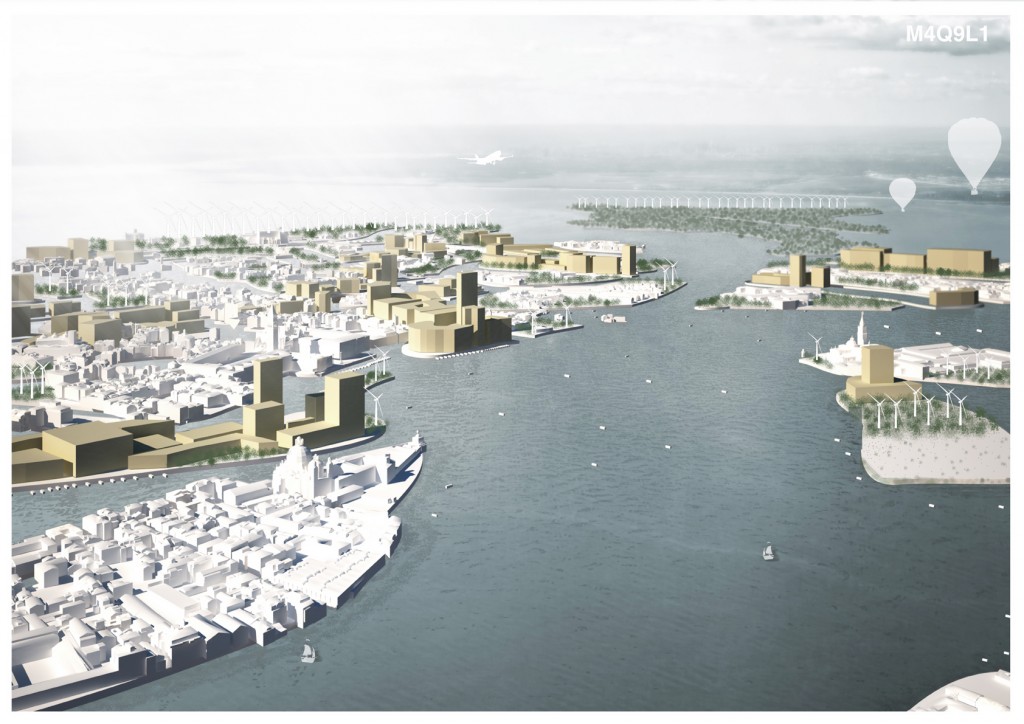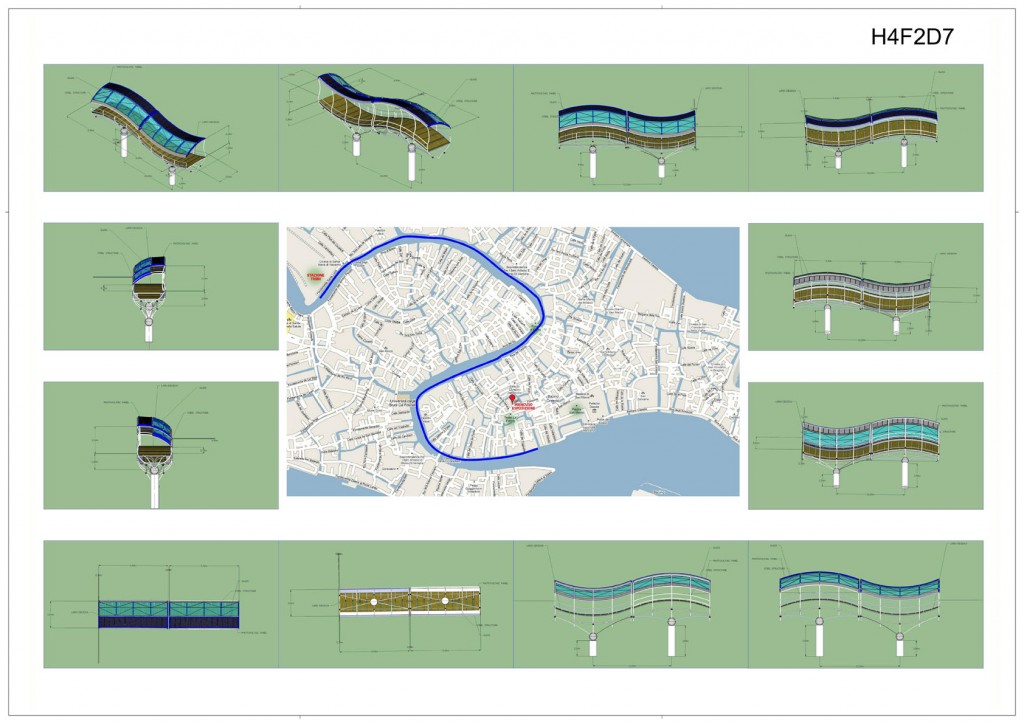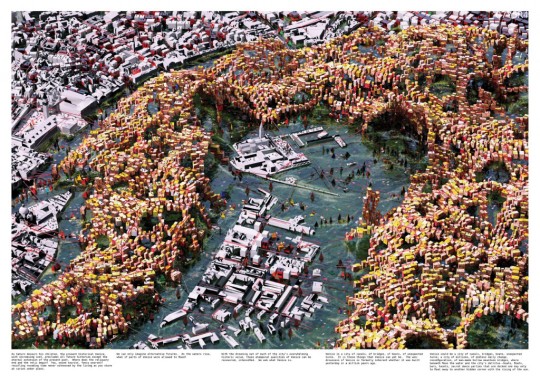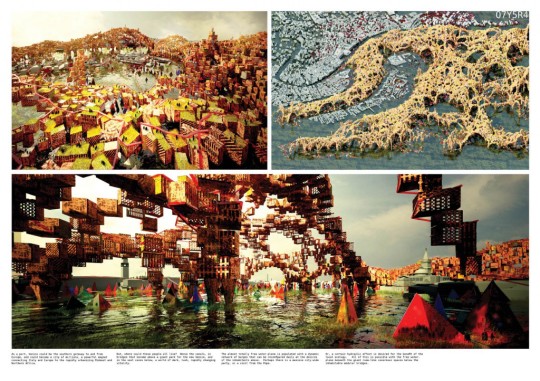Info:
Title: Historical Venice’s “Value” - Code: O7Y5R4Contest: Venice / 2011
By: C. MILLER
Views: 4448 Likes: 1
Votes:
BJARKE INGELS4 NERI OXMAN10 ELENA MANFERDINI10 MARIA LUDOVICA TRAMONTIN5 BOSTJAN VUGA46.6
Historical Venice’s “Value”
Although primarily thought of as a tourist destination known for its historical value, Venice’s location is and has been ideal as a port, a central node in a network of trade between Europe and the Mideast and Africa. As these regions rapidly urbanize and modernize, Venice is presented with an opportunity to once again become a nexus of world shipping trade, growing in size to millions of people.
The typical approach to this possible rapid growth would be to produce a schizophrenic city, a ghettoized “new city” for the mostly immigrant worker and an authentically historic “old city” for the monied global tourist. As such, the “historical value” of Venice would work in part to reinforce existing class divisions. With this in mind, we see the value of Venice’s historic aura as negative.
As Venice faces as a continual threat of inundation, we ask, why not allow the city to be flooded? The cost of cyclopean engineering project is immense. Why not instead adapt, extend and augment a dynamic Venice? The space within the existing buildings themselves could be saved. Air bladders could be inserted within the extant rooms and expanded. The space between building and bladder could then be pumped with lightweight concrete, acting as its own formwork for a waterproof interior shell.
The money that would have been used for a massive system of dams could instead be directed to expanding existing Venice, attracting some of the underutilized human capital that is currently destabilizing Europe’s trading partners in the Mideast and Northern Africa.
As an approach to expanding historical Venice, we propose a network of inverse caternary bridges constructed of modular componenets. These bridges offer two advantages—they augment and extend Venice’s existing network of canals and bridges, and they have a minimal footprint at the waterline, minimizing the risk of flooding. Above, the roofs of these bridges could provide a new parkscape for the city. Below, the nearly uninterrupted water plane could become a liquid infrastructure for an ad-hock network of reconfigurable floats, boats and barges that could be reconfigured daily with the desires of the people of the new city.
Technical Approach
We conceived the project using a custom software tool that facilitated both dynamic simulation and an agent or ant-based approach.
The structure of the new city network and its relation to existing Venice was constructed using a recursive approach. First, a build step would be processed where ants would build off of the current graph during a random walk. This would be followed by an analysis step using an iterated ant system where, during each substep, ants would try to find the shortest path between two random points on the graph. The sum of the pheremones from these substeps would then be deposited on the edges of the graph. The edges with the lowest of these pheromone values would then be culled from the graph, resulting, through gradual descent over multiple iterations, in a graph with a progressively shorter average node-node distance.
After the graph was built, it was structured to take gravity loads using a simulated inverse caternary approach. The graph was then populated with modular components that organized themselves using the topology structure of the graph itself to get data with which to orient themselves with their neighbors.
Postscript. The Project Extends to the Tools
We feel that increasingly there is importance in considering the tools used as an integral and continuing part of a project. Especially with a subject as dynamic as a city, with the prevalence of dynamically reconfiguring ad-hoc networks already present in the form of the cell phone, the automobile, the human body itself, a method for conceptualizing built form as a part of this network could allow for said form to be reconfigured and extended long after the designer is gone using the tools themselves.
Info:
Title: Historical Venice’s “Value”
Time: 7 giugno 2011
Category: Venice
Views: 4448 Likes: 1
Tags: -








